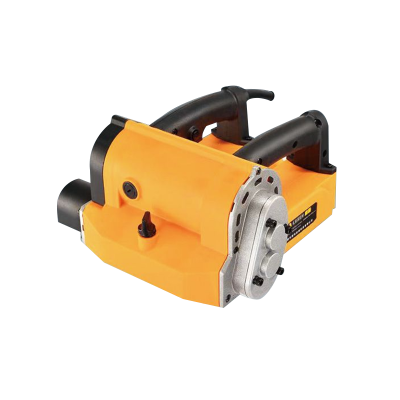Supply Wall Planing Machine Manufacturing Wholesaler

In the realm of woodworking, achieving a smooth and precise finish is paramount. Traditional hand planing techniques, while offering a certain level of control, can be labor-intensive and time-consuming. The advent of the wall planing machine has changed this process, offering a range of benefits that surpass the capabilities of hand planing.
One of the significant benefits of using a wall planing machine is the increased efficiency it brings to woodworking projects. Unlike hand planing, which requires constant manual effort and can be physically demanding, a wall planing machine can quickly and easily smooth large surfaces with little effort. This not only reduces the time spent on planning but also lessens the risk of fatigue and injury associated with repetitive manual labor.
Another advantage of using a wall planing machine is the consistency it provides. Hand planing relies heavily on the skill and steadiness of the operator, which can create variations in the final product. A wall planing machine, on the other hand, offers uniform results across the board. This consistency is particularly important in large-scale projects where multiple pieces of wood need to be matched in terms of finish and smoothness.
The precision that a wall planing machine offers is another noteworthy benefit. With adjustable settings for depth and angle, a wall planing machine allows for fine control over the planing process. This level of precision is crucial for achieving the exact specifications required in complex woodworking projects, where a slight deviation can compromise the integrity of the final product.
The safety aspect of using a wall planing machine should not be overlooked. Hand planing can be hazardous due to the risk of accidents, such as cuts and splinters. A wall planing machine, with its enclosed design and safety features, significantly reduces these risks, ensuring a safer working environment for woodworkers.
In terms of versatility, a wall planing machine stands out. It can handle a variety of wood types and thicknesses, making it a valuable tool for both small-scale hobbyists and large-scale commercial operations. This adaptability means that a single wall planing machine can be used across different projects, saving on the cost and space required for multiple specialized tools.
The durability of the finished product is also enhanced when using a wall planing machine. Hand planing can leave behind small imperfections that may compromise the structural integrity of the wood over time. A wall planing machine, by providing a smoother and more even surface, helps to ensure that the wood remains strong and stable.
The environmental impact of woodworking processes is an increasingly important consideration. A wall planing machine uses less material and produces less waste compared to hand planing, making it a more sustainable option. This is particularly relevant in an industry that is becoming increasingly aware of its ecological footprint.
In conclusion, the benefits of using a wall planing machine over hand planing are manifold. From increased efficiency and consistency to enhanced safety and sustainability, a wall planing machine offers a range of advantages that make it an indispensable tool in modern woodworking. As the industry continues to evolve, the role of the wall planing machine is likely to become even more prominent, shaping the way we approach wood finishing tasks.
